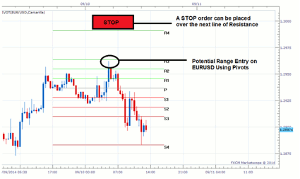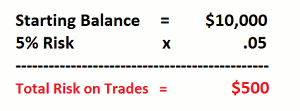Walker England of DailyFX.com lays out the steps that traders should always be aware of when it comes to managing their day trading positions.
Day traders should always have a plan of action to exit the market. However, even veteran traders can be tempted to hold onto losing trades longer than necessary. Not only is this a bad trading practice, this can be devastating to your account balance if the market continues to move against any open positions. The good news is that traders can work on preventing this worst case scenario by following some simple risk management guidelines. Let’s get started with three tips for managing day trading positions.
Setting a Stop
The first step in risk management is setting your stop orders. This is a step traders should take regardless of the strategy they are executing. One easy method to stop placement is to find a line of support or resistance on your graph. These areas can be determined by price action, pivot points, or other methods and should be easily identifiable on your graph. The logic behind this is that if you are selling the market, traders will want to exit the market if resistance is broken and price moves to a new high.
Let’s look at an example using the EUR/USD currency pair, along with camarilla pivots. In early trading Wednesday morning, the EUR/USD tested the top of a defined camarilla pivot range. If traders were looking to sell the range (R3), it would have been intuitive to place a stop above the next line of resistance (R4). By placing this order, in the event that the range was invalidated and a new high was created, all open positions selling the EUR/USD would be exited.
Learn Forex: EUR/USD Range and Stop Order

Created using FXCM’s Marketscope 2.0 charts)
Click to
Enlarge
Risk by the Percentages
Setting a stop is only a portion of the risk management equation. Once an area on the graph is selected for stop placement, traders need to determine the amount of their account balance they plan to risk per trade. One easy way to do this is to consider what is known as the 1% rule. This rule stipulates that traders should never risk more than 1% of their account balance on any one single open position. That means, using the math above, if you are trading a $10,000 account you should consider risking no more than $100 on any one trading idea.
Next, traders should also consider the 5% rule. This means traders should never have more than 5% of their account at risk at any time. Using this rule, in the worst possible trading scenario, if all of your trades are closed out at a loss you will only lose 5% of your account balance. Using the math below, you can see that on a $10,000 balance, this would be a loss of $500. While no one wants to lose $500, that will still leave $9500 remaining in your trading account balance to continue looking for other opportunities.
By Walker England, Trading Instructor, DailyFX.com












